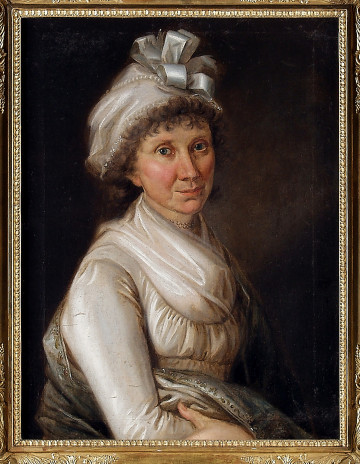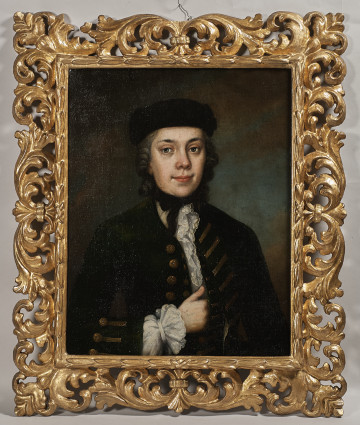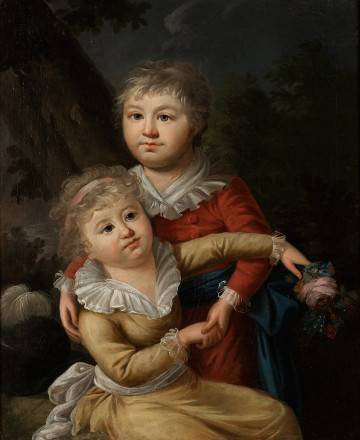
Portrait of Aleksandra Potocka, née Lubomirska
2nd half of the 19th century
Castle Museum in Łańcut
Part of the collection: European classics of modernity
Leon Kaplinski, who came from a landowning family with Masonic traditions, began his academic education in 1845 as a student of philosophy at the Royal University in Wroclaw. At that time, he made friends with Count Seweryn Mielżyński, a patriotic activist, collector and painter from Wielkopolska. Mielżyński, shaped in the Geneva environment developing the principles of juste milieu (art of the middle), introduced Kapliński to the arcana of the style unhurriedly evolving from Romanticism to Academicism. After being involved in several conspiratorial associations and participating in the Spring of Nations, the young painter, having settled down in Paris in 1849 or 1850, could devote himself to culture in the broadest sense. At the School of Fine Arts, he studied under the representative of historicism, Joseph Nicolas Robert-Fleury, and then in a private studio of the cold romantic Ary Scheffer. Apart from painting, he also practiced literature, for which, in the opinion of the critics of the time, he was more predisposed. Hence, Kaplinski's self-portrait painted towards the end of his life depicts a man with a tired, worried face, leaning against a Gothic tomb with an image of a lying knight. The figure of a cavalier of the temple, a member of a medieval order fighting on behalf of Christianity, became a popular motif for Poles: shrouded in legend, the history of the once powerful congregation, dissolved by deceit by greedy secular authorities, was identified with the tragic history of the Republic of Poland. Kapliński's costume - armour, sword, pilgrim's bottle, and above all, tunic and cloak with a red cross - refers on the one hand to the patriotic and messianic mood of Zygmunt Krasiński's writings and the Templar legacy developed by the freemason movement. On the other hand, he takes on the frail figure of a painter and poet embittered by his lack of due fame, remaining in the shadow of his friends from the Parisian emigration circle, Henryk Rodakowski and Cyprian Kamil Norwid.
Szymon Piotr Kubiak
Author / creator
Dimensions
cały obiekt: height: 143 cm, width: 109 cm
Object type
painting
Creation time / dating
Creation / finding place
Identification number
Location / status

2nd half of the 19th century
Castle Museum in Łańcut

3. ćwierć XVIII wieku
Castle Museum in Łańcut

1. ćwierć XIX wieku
Castle Museum in Łańcut
DISCOVER this TOPIC
Museum of King Jan III's Palace at Wilanów
DISCOVER this PATH
Educational path